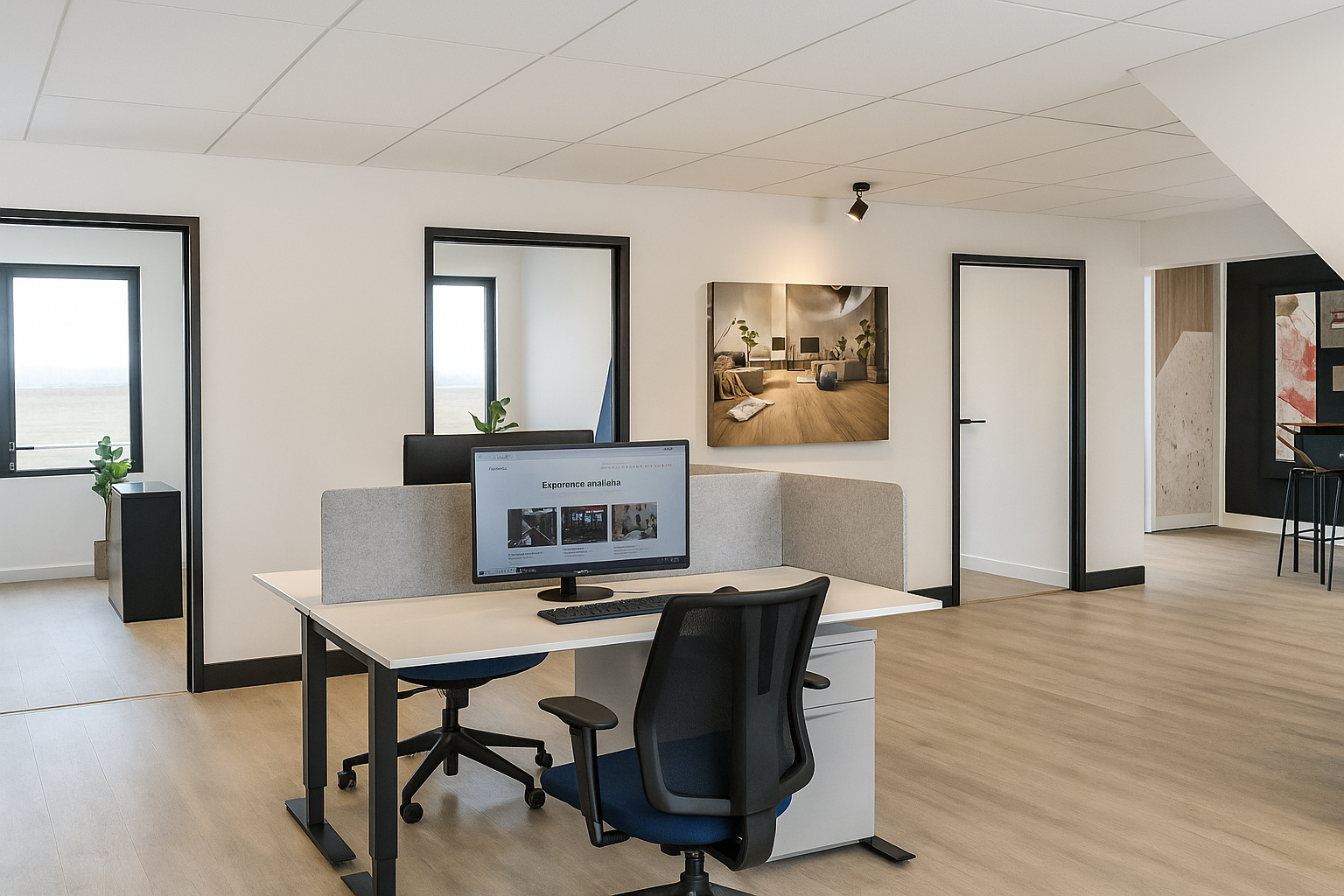Clutter steals seven hours weekly from every knowledge worker. Office interior design incorporating intelligent storage increases productivity by 31% while office wellness improves by 44% when employees work in organized environments supporting cognitive function rather than fighting visual chaos. Workers waste 4.3 hours weekly searching for misplaced items, however most small businesses treat storage as afterthought office furniture rather than strategic infrastructure that determines whether employees can think clearly or drown in operational friction daily.
With this emerging problem due to economical impact, how can business offices cope? Let’s consider some practical storage solutions for small office interior design.
The Floating Wall Layout
In constrained workspaces, walls must double as workhorses. The floating wall layout integrates shelves, pegboards, and magnetic surfaces anchored at varying heights to break visual monotony while reclaiming 40% of floor space lost to freestanding furniture.
An interior designer uses floating shelves above entryways, desks, or door frames to store objects by access frequency, documents high up, essentials near eye level. The metal shelving made by Canadian office furniture manufacturers demonstrates vertical lightness, combining open shelving with concealed bins that absorb clutter while maintaining visual flow. When paired with bi-level lighting, these installations prevent walls from feeling heavy or crowded.
Design-build office interior designer coordination ensures wall systems integrate with electrical and HVAC routes, preventing spontaneous drilling disasters during retrofits. This planning unlocks unused cubic metres of capacity invisible to traditional horizontal layouts. For small law firms or creative studios, wall systems with acoustical panels also double as noise diffusers, merging storage and soundproofing, harmonizing both quiet concentration and clean aesthetics.
The Cloffice Conversion
The cloffice, a closet-turned-office hybrid, remains one of the most elegant small-space revolutions. When doors open, it reveals a fully operational workspace; when closed, it disappears entirely. Office interior design treating compact nooks as high-function zones transforms underutilized alcoves or corridor recesses into sophisticated built-in work pods.
Modular office furniture featuring fold-away desks, slide-mounted drawers, and retractable shelving supports the invisible workspace model. For instance, a GALANT high cabinet paired with a fold-down desktop combines daily practicality with evening discretion that is ideal for hybrid professionals who share offices with others. Strategic lighting placement converts tight spaces into productive sanctuaries without overwhelming their surroundings.
The commercial interior designer’s secret lies in sequencing visibility: workspace by day, serenity by night. The cloffice isn’t about downsizing, it’s about temporal efficiency, where space expands and contracts with the rhythm of work itself. Interior design services using Canadian office furniture with universal modular compatibility ensure future scalability, allowing hidden desk zones to transition later into display areas or secure storage when operational demands evolve.
The Rail System
Imagine an office where every shelf, cabinet, and organizer glides as easily as a chair. Mobile rail storage layouts integrate rolling pedestals, track-mounted shelving, and lockable carts, turning static rooms into flexible working arenas. Hospitals and libraries pioneered this principle decades ago. Compact shelving sliding sideways to open aisles only when needed. Now, high-density rail systems scale elegantly into small office environments.
Design-build office interior designer teams map out mobility corridors ensuring safe clearances between mobile furniture during peak movement. These layouts reward adaptability, ideal for co-working setups or team-based environments requiring rapid reconfiguration between meetings and deep work.
The Under-Desk and Overhead Symbiosis
Small offices often ignore the potential lying just beneath and above the workspace. The under-desk & overhead symbiosis layout creates layered zones for differentiation between personal and shared resources.
Commercial interior designer specifications for multi-tier desks combine shallow drawers for personal tools, sliding compartments for shared cables, and retractable vertical risers for electronic storage. Systems like the cabinet-under unit in dark green or a drop file module allow employees to conceal clutter while maintaining immediate access. Overhead shelves framed at symmetrical intervals preserve sightlines while maximizing capacity.
Using Canadian office furniture designed for dual-level functionality, companies maintain ergonomic legroom underneath while taking advantage of vertical layers overhead. Interior designer strategy pairs under-desk cable channels with modular office furniture featuring concealed conduits, ensuring clean transitions from power sources without messy wiring. This reduces both psychological clutter and physical trip hazards which are key contributors to office wellness deterioration in overpopulated work zones.
The Corner Core Layout
Every small office has corners ignored like dead ends of creativity. But strategically configured storage corners act as stabilizing anchors for spatial flow. In diagonal layouts where storage wraps along unused edges, triangular bookshelves, L-shaped filing units, or pivoting cabinets convert static geometry into efficiency triangles guiding natural circulation through the room.
For instance, installing compact corner shelving behind L-shaped desks allows space for printers and decorative greenery while keeping walkways clean. Modular office furniture such as utility carts fits elegantly in angular recesses, serving as portable equipment stations or snack corners. Commercial interior designer experience transforms these confined corners into multi-purpose relief zones which simultaneously serve storage, sound absorption, and aesthetic framing.
Design-build office interior designer coordination guarantees corner-load capacities align with structural tolerances. Beyond practicality, these layouts create spaces that feel psychologically balanced, directing sightlines diagonally to establish perceived spaciousness in otherwise tight footprints.
The Dual-Purpose Partition Layout
Open offices often sacrifice acoustic privacy for visual transparency. The dual-purpose partition layout solves this by integrating freestanding divider units with built-in cabinets, planters, and acoustic material cores. Instead of plain partitions, storage walls now carry sound dampening layers and organizational functionality in one gesture.
Interior design services blend acoustic vertical panels with modular office furniture, configuring these partitions to hold supplies on one side and soft moss or felt surfaces on the other. This reduces reverberation by 60% while providing tactile greenery for biophilic comfort.
Employers choosing Canadian office furniture systems using recycled felt tiles enjoy additional sustainability credit without compromising sound control. These acoustic partitions allow teams to customize zones for collaboration or individual concentration without permanent construction.
Design-build office interior designer involvement ensures proper weight distribution, lighting integration, and visual transparency. When done right, these smart partitions act as sound engineers, dividers, and storage systems fused seamlessly into spatial rhythm rather than competing with it.
Frequently Asked Questions (FAQ):
How can design-build office interior designer teams integrate rail or partition storage without reducing usable workspace?
Design-build office interior designer teams integrate mobility tracks into flooring or ceiling systems during construction, aligning clearances with safety rotation zones. This coordination prevents encroachment on workspace dimensions. Commercial interior designer planning ensures these hybrid storage units double as acoustic or visual separators, delivering multiple benefits under a single footprint.
Why is Canadian office furniture often recommended for small workspace storage solutions?
Canadian office furniture is optimized for compact layouts and adheres to stricter space and ergonomic standards for smaller floor plans. Local production ensures correct weight limits for vertical systems and compliance with accessibility codes. Sourcing furniture domestically also supports reconfiguration parts availability for long-term modular flexibility.
What specific layout works best for dynamic hybrid offices with limited space?
For hybrid workplaces, a dual-purpose partition layout paired with modular desks and mobile pedestals works best. This allows rapid transition from individual desks to collaborative islands. Designers using modular office furniture integrate visual transparency and acoustical material balance within the same structure, minimizing footprint while maximizing adaptability.
Key Takeaways
- Office interior design using smart vertical layouts can reclaim 40% of floor space while maintaining visual openness.
- Modular office furniture like rail systems and roll-out pedestals creates mobility, allowing multi-use zones in small offices.
- Under-desk and overhead storage maximize ergonomic function without disrupting workflow circulation.
- Corner-core configurations restore dead zones into active diagonal circulation anchors improving space flow.
- Partition-integrated storage adds acoustic benefits while preserving collaboration.
- Commercial interior designer expertise translates storage systems into behavioural tools guiding organization naturally.
- Working with Canadian office furniture providers ensures scalable solutions fitted to local dimensions and compliance standards.
- Source office furniture designed for adaptability reduces reconfiguration downtime in evolving work models.
- Interior design services that align furniture selection with visibility psychology boost long-term user satisfaction.
- Design-build office interior designer coordination achieves structural, acoustic, and ergonomic harmony in confined workspaces.
Storage is not about where things go, it’s about how space communicates order, movement, and focus. Professional teams combine commercial interior designer insight and modular office furniture technology to make minimalism operational, not decorative. Partnering with a design-build office interior designer ensures that storage integrates structurally, supporting both human comfort and workflow precision across every square metre. In the end, an organized environment is not just efficient, it’s therapeutic. It frees the office to think.

